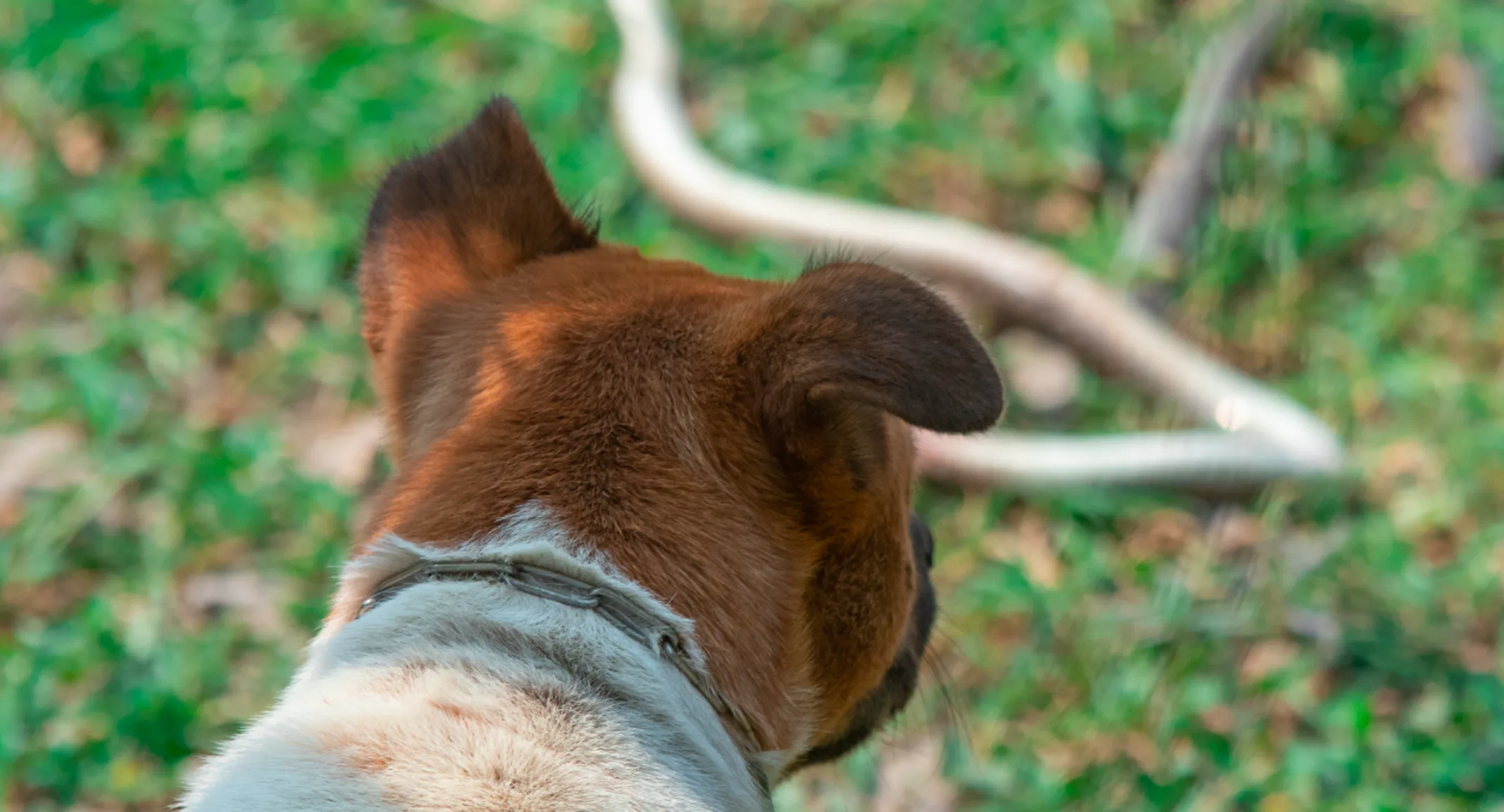Pet Safety Tips: Wildlife
Pet Safety

One of the great appeals of our area is that we're rich with beautiful landscapes and wildlife, though there are times when this can pose a danger to our furry friends
Learn more about the wildlife risks in our area and tips on how you can keep your pet safe from the less cuddly animals with whom we cohabitate.
Rattlesnakes
We all know that famous sound! In the spring and summer months, rattlesnake sightings begin to increase, but even when the weather starts to cool in the fall they can still be encountered. Rattlesnake venom can be very toxic to pets and almost always requires the use of antivenin to counteract the poisons. While bites to dogs are often defensive, cats can be seen as prey to snakes and are often delivered a more dangerous attack. If your pet is bitten by a snake, seek medical attention immediately
Deer
But Bambi was so friendly, right? As beautiful as deer are, the safety risks of rutting season should be taken very seriously, as it is extremely common for bucks to attack pets that get too close, causing injuries that often require surgery. Dusk and dawn are most often when these attacks occur, so be sure to keep an extra close eye on your pet when he or she is outside during these times and do not let him or her roam too far our of your sight.
Coyotes
Though canines themselves, coyotes aren't always so friendly to their distant cousins. Coyote attacks occur most often at dawn or dusk, and are usually directed towards smaller dogs or cats running free in a fenced yard. Injuries from these attacks are usually substantial and often require surgery. Coyotes are also a possible rabies reservoir species, so if your pet is bitten by a coyote he or she is considered at risk for rabies.*
TIPS TO KEEP YOUR PET SAFE FROM WILDLIFE:
Keep your pet on a short leash or observe closely when walking, especially at dusk and dawn
Clear your tard of any potential snake or coyote hiding places: untrimmed bushes, wood, scrap metal, leaf piles, open shred or crawl spaces
Eliminate any rodent (snake bait) infestations from your backyard
Do not allow your pet to play with dead snakes
Do not allow your pet to roam the yard freely without your presence, especially at dusk and dawn
Avoid dense grass and large rocks or caves
If a deer or coyote acts aggressively towards you or your pet, make yourself appear larger using a jacket or by raising your arms, make loud noises, and slowly back away. Never turn your back to an aggressive animal
IF YOUR PET HAS AGGRESSIVE CONTACT WITH ANY WILD ANIMAL, BRING HIM TO AESC FOR TREATMENT AS SOON AS POSSIBLE
